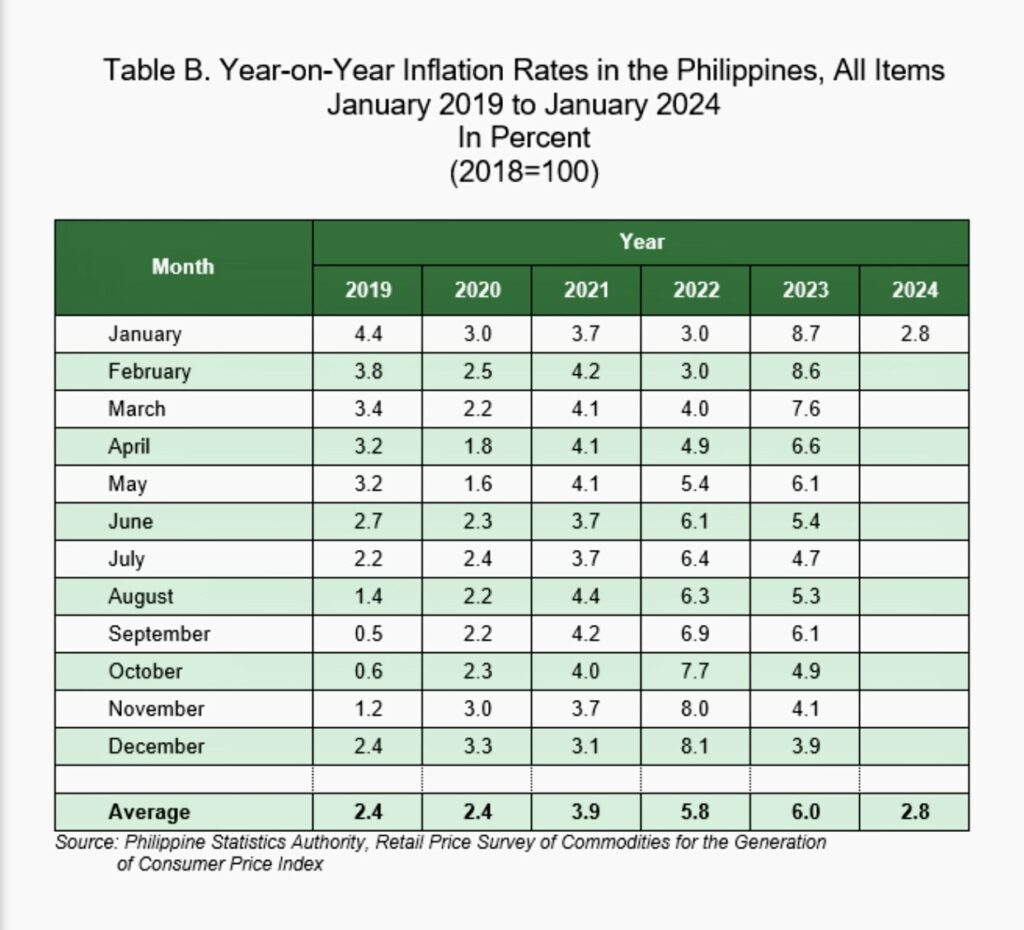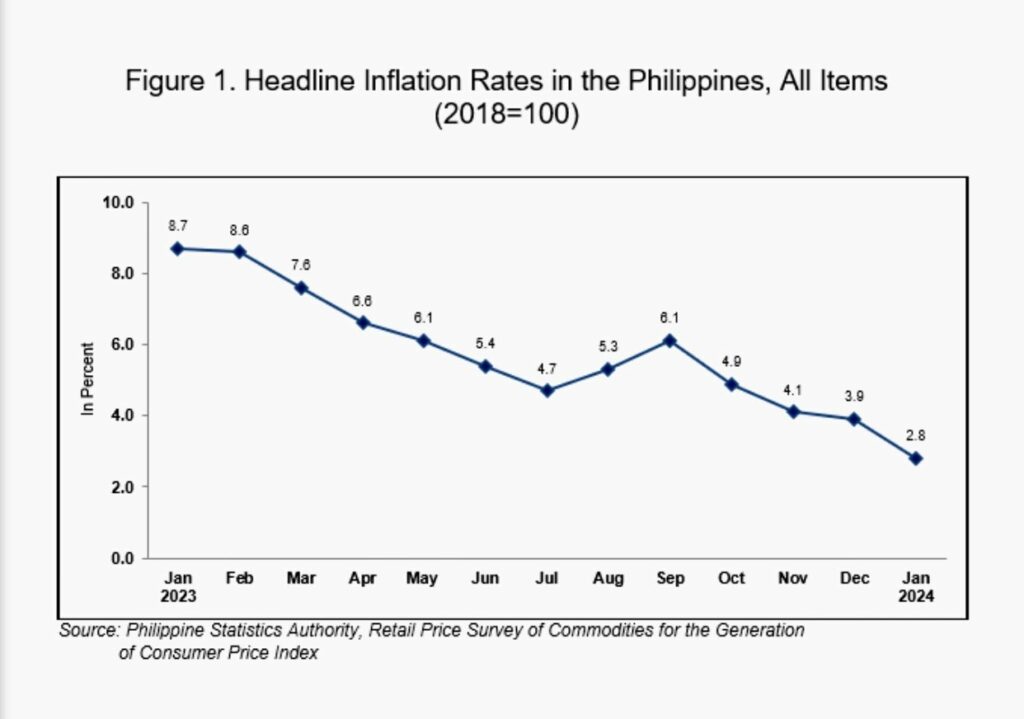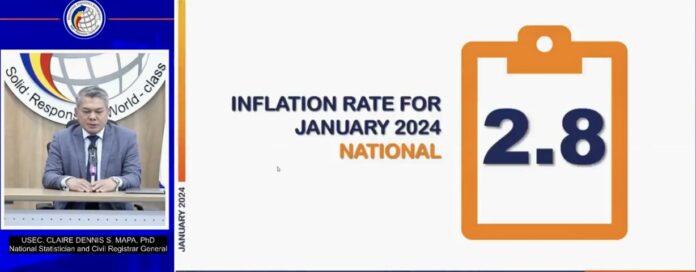Headline inflation decelerated in January to 2.8 percent, its slowest pace since October 2020, due mainly to lower food prices, utilities, and transport.
Economic Planning undersecretary and national statistician Dennis Mapa said softer prices of vegetables, fish and sugar contributed the most to the slowdown in headline inflation.
He suggested inflation would have slowed further had rice prices were lower compared to last year. And because of the lower price base between January and July last year, Mapa said, inflation rate for rice would likely remain elevated, especially with world prices for the grain still higher.


Rice has a weight of 8.87 percent in the consumer basket used for determine headline inflation and higher at 17.87 percent for bottom 30 percent of income households.
Core inflation, which excludes selected food and energy items, slowed to 3.8 percent in January from 4.4 percent in December.
For the bottom 30 percent of income households, inflation also declined to 3.6 percent from 5.0 percent in December and 9.7 percent in January last year.
Inflation, as measured by the consumer price index, was at 3.9 percent in December and was at 8.7 percent in January last year. It has been at an almost steady slide since the January 2023 peak.
The January inflation print was at the lower end of the projected 2.8 percent to 3.6 percent range of the Bangko Sentral ng Pilipinas, which continues to watch price movements to determine if it could start easing monetary policy. The BSP has raised its key interest rate to 6.5 percent from 2.0 percent since 2022 to tame inflation.
Mapa said the PSA is watching the recent increases in the prices of petroleum products as this could impact inflation rate moving forward.






